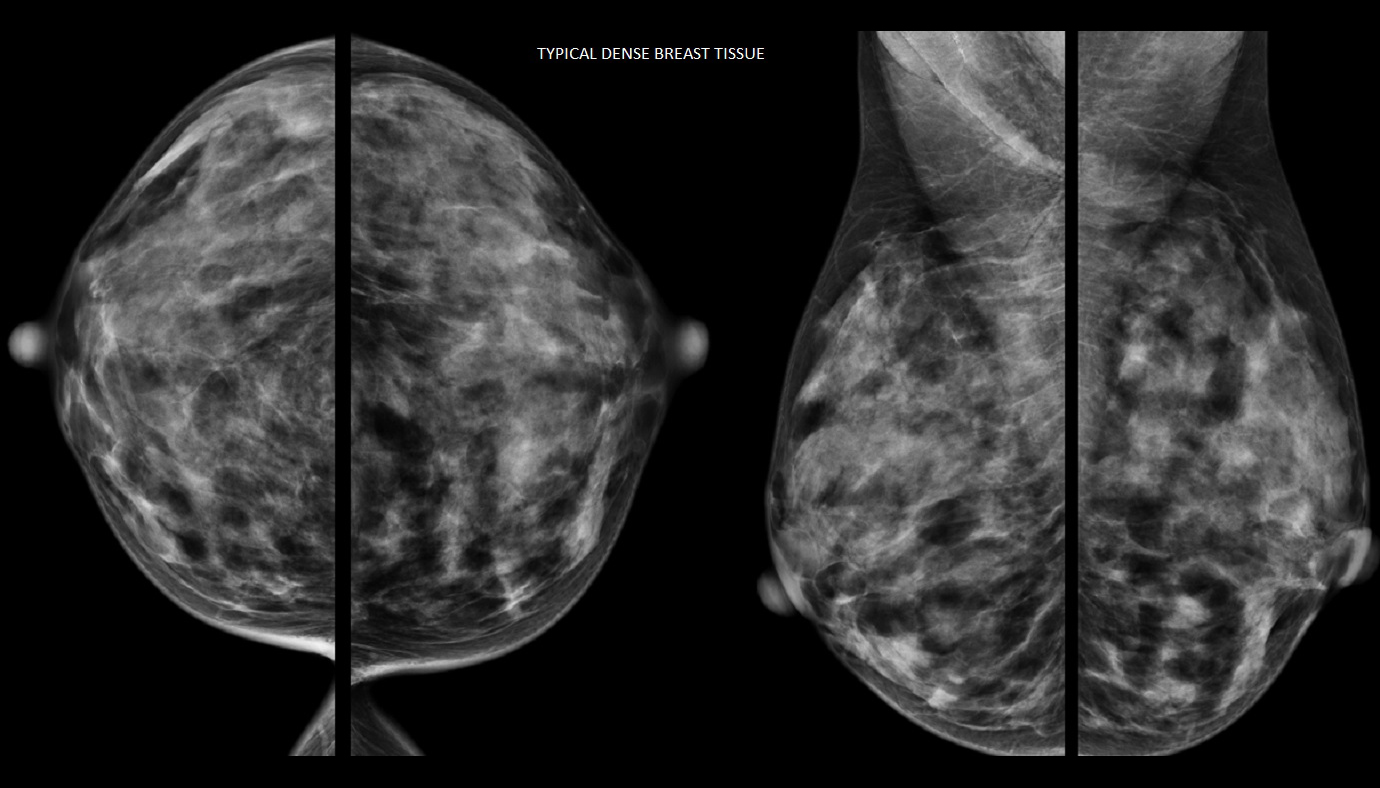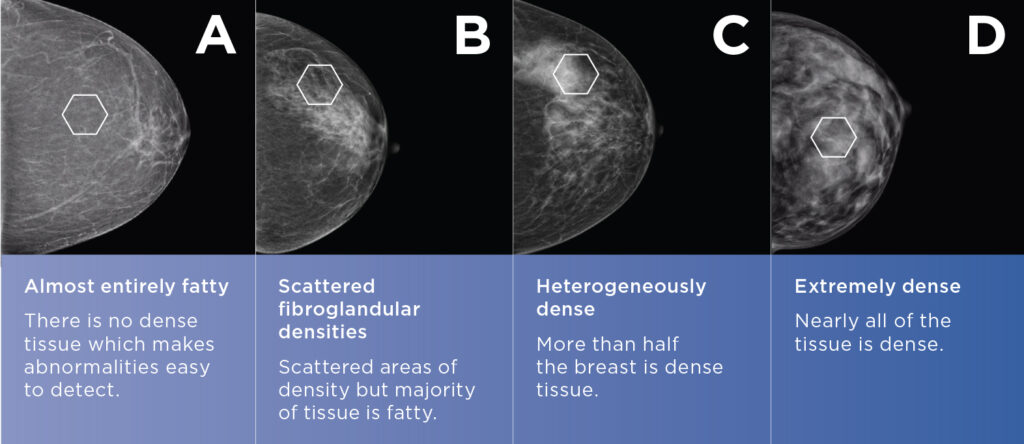
Home ADVANCES IN BREAST IMAGING
Mammography is still the gold standard for breast cancer screening. However, there are other breast imaging services that are beneficial when used in conjunction with mammography, such as digital breast tomosynthesis and automated breast ultrasound.
For example, digital breast tomosynthesis (DBT) is a type of 3D mammography that uses computerized detection plates that take multiple images in an arc. This provides pictures from numerous different angles. Digital technology combines the images, adding them together and sharpening certain areas and blurring others. This produces a more detailed image that helps to better illuminate the presence of cancers, without increased radiation levels or scanning time.
All Mayfair locations use DBT. Plus, in 2018, Mayfair Diagnostics was the first in Western Canada to install the leading-edge Senographe Pristina Dueta mammography system in several of our clinics. Now we have 13 mammography clinics with this new system, which uses DBT.
Pristina also helps make mammograms more comfortable for patients through its ergonomic design and a special feature called patient-assisted compression. After the breast is properly positioned by a technologist and initial compression is set, you can choose to use a handheld wireless remote control to adjust the level of compression to what’s comfortable for you, under the guidance of a technologist.
Some patients find mammograms uncomfortable, due to the pressure, and are therefore less likely to go for regular breast cancer screening with mammography. Patient-assisted compression allows the patient to reduce the pressure of the exam, while still maintaining excellent diagnostic quality. Giving patients some measure of control during their exam can help decrease their anxiety and increase their willingness to return.
This higher level of detail is especially important when scanning dense breasts, because the more dense tissue that is present the higher the risk for breast cancer. Breast density is not a measure of how breasts look or feel, rather it describes how well an x-ray travels through the tissue.
On a mammogram, fatty tissue looks dark, while both dense tissue and tumours look white, making it hard to differentiate between the two. The white-looking breast cancers are easier to see on a mammogram when they’re surrounded by dark-looking fatty tissue.

The Breast Imaging Reporting and Database Systems (BI-RADS), classifies breast density into four groups, or breast density scores:
Scoring is not an exact science and radiologists often disagree about levels of density. Mayfair uses the Volpara Health Technologies program which scores density from A to D.
Automated breast ultrasound (ABUS) is another breast imaging service that is especially beneficial to women with dense breast tissue. A high breast density (Volpara) score can make a mammogram harder to read and ABUS allows the technologist to check the breast from a variety of angles offering more accurate interpretations. For extremely dense (Volpara D), or heterogeneously dense breast tissue (Volpara C) combined with additional risk factors for breast malignancy, Mayfair recommends supplemental ABUS or handheld breast ultrasound.
With ABUS, images are acquired with a large transducer that is placed on the breast in several different positions. They are then processed at a workstation and reviewed, removing operator bias and providing a uniform assessment process. ABUS is also fast and almost painless, looking at both breasts in about 15 minutes.
A number of studies indicate that ultrasound is one of the most promising adjunct screening modalities because of its benefit for dense breasts and its low cost and availability.
Mayfair offers DBT at all 14 of our mammography locations and patient-assisted compression at 13 of our clinics. Coventry Hills has a mammography system that uses DBT but doesn’t offer patient-assisted compression.
Automated breast ultrasound is available at our Market Mall, Mayfair Place, Southcentre, and The CORE locations. Please visit our breast imaging services page for more information.
We foster a supportive and collaborative culture designed to encourage positive patient experiences and build strong working relationships across the organization:
Our core values shape the way we work with patients, partners, and fellow employees. And, more than anything else, they’re what set Mayfair apart. In everything we do, this is what we strive for:
EXCELLENCE
We share a commitment to high quality and excellence in all that we do. This commitment calls on all of us to achieve the very best of our capabilities and exceed our own expectations.
CURIOSITY
We innovate in everything, from services to processes. We believe meaningful change and effective problem solving come only by looking at challenges and opportunities from new angles and by exercising our creativity and curiosity.
PASSION
We show pride, enthusiasm, and dedication in everything that we do. We are committed to producing and delivering high-quality results and services. We are passionate about our industry and about our company, services, partners, and patients.
COLLABORATION
Our team is supportive of each other’s efforts; we are loyal to one another; and we care for one another both personally and professionally. We promote and support a diverse, yet unified, team. We work together to meet our common goals across Mayfair clinics, locations, and geographies. Only through collaboration on ideas, technologies, and talents can we achieve our mission and vision.
SERVICE
We take pride in delivering exceptional service every day. We listen to every request with an open mind, always looking for opportunities to go above and beyond to create memorable, personalized experiences. We take responsibility to answer our referrers’ and patients’ requests and respect their time by always responding with a sense of urgency.
Start a career with Mayfair Diagnostics — one of Western Canada’s leading medical imaging teams.
Headquartered in Calgary, Alberta, we’ve been helping people f ind clarity for their health for over 100 years. At our clinics in Calgary and area, Regina, and Saskatoon, our team of radiologists, technologists, and support staff work in a truly integrated way to provide exceptional experiences for our patients. Joining our team is more than a job. It’s an investment in your future — a plan for success.
OUR PEOPLE
Our people share our quest to make a difference in our patient’s lives. We’re a team of professionals, disciplined in our skills and compassionate with our patients, providing the care and attention they need. At our core, we are a trusted partner in our patients’ health care journey. Our patients, physicians, and other health care providers rely on us for quality imaging to help manage their patient’s health care decisions with certainty. But our business is about more than just imaging. It’s about building lasting relationships and making a meaningful difference in the lives of those we meet.
OUR VISION
A world in which every person has clarity about their health. We push the boundaries of what is possible and embrace change as an opportunity. We strive to be thought leaders and encourage creativity by providing a safe place for calculated risk taking. We learn from our mistakes. We share best practices across our operations and are recognized by our peers for our work. We engage the best to help propel us forward in achieving our goals.